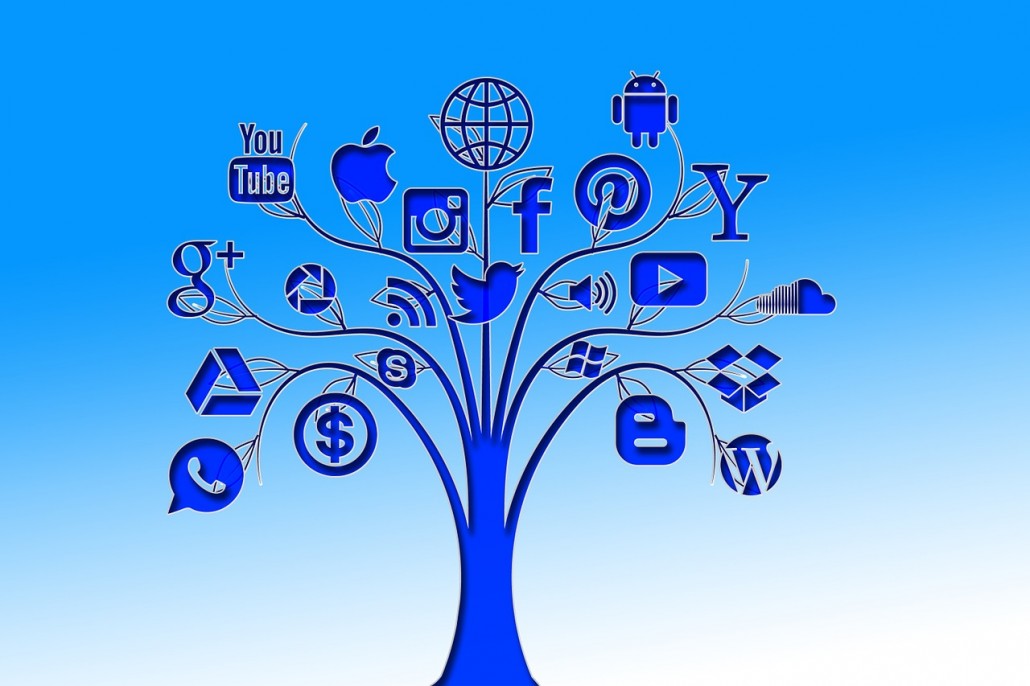
Content marketing is the probably the biggest marketing trend of 2013. It seems likely that content will remain the biggest marketing industry buzzword going into 2014. Do you have a resolution for the New Year? Maybe it’s time for your marketing department to come up with a collective resolution: successfully implementing a content marketing strategy in 2014.
You may be thinking content marketing doesn’t work for B2B, and you’re not exactly wrong. A lot of companies haven’t figured out how to get content marketing to work efficiently for them. The truth is, B2B content marketing brings a unique set of challenges. However, provided you know what you’re in for, the return on investment can be just as high as it is for B2C.
The challenges of B2B content marketing:
How to implement a successful content strategy
Because of these challenges, it’s not surprising that about half of companies surveyed by Content Marketing Institute reported they had no content marketing strategy. Given the lag in adoption of this marketing channel, those firms that do find a way to implement a successful content marketing strategy will be ahead of the game.
Here are some tips to get started:
When done right, these strategies will help you generate better leads for your sales team. Don’t let your fears hold you back from the jumping on the content marketing bandwagon.

By Ryan Warren
Sales and marketing departments often butt heads. Despite them working toward the same goal, the lack of communication between employees in these divisions can often lead to decreased efficiency.
3 things salespeople wish marketers knew
Sales can be a difficult job. If salespeople could put one thing on their holiday wish lists, it would probably be that marketers try to empathize with their position more. Instead of buying your sales colleagues ornaments or chocolates this year, try giving them something they really need: a little more understanding.
1. Selling is difficult
Salespeople love to sell, but it’s a hard job. Selling is personal, says best-selling author Seth Godin. When a salesperson makes a promise, he or she has to keep it. In a similar vein, selling is highly interpersonal. Sales is like a long conversation. The salesperson can’t always tell you when a prospect is ready to buy. Often, no one knows.
2. There’s a huge difference between inbound and cold calls
No one wants to be in a situation where they have to make a cold call. As Godin puts it, the marketer’s job is to prevent a cold call scenario from ever taking place. Given how rude people in the U.S. can be over the phone, it’s no surprise that salespeople would want to avoid cold calling. A recent poll from The Atlantic Monthly demonstrated just how foul-mouthed Americans tend to be on the phone, particularly Ohioans.
3. Salespeople enjoy a good conversation-
- especially with you, the marketer! Salespeople tend to learn from conversations with each other. In turn, marketers stand to learn a lot from the salespeople who are down in the trenches.
What’s on the wish list in your sales department?
It all boils down to one big wish, and that’s known as lead qualification, according to Jeff Kalter for Business 2 Community.
The job of marketers is to generate leads, which salespeople then follow up on. However, the marketer’s job shouldn’t be over as soon as he or she has generated some interest in a product or service. As Kalter notes, this situation is lose-lose. When marketers hand over too many leads, salespeople are only able to call a few of them. Panicked about wasting time, the salesperson then throws out the rest of the leads, confident he or she can save more time by just starting over.
Instead, marketers can work to alleviate the burden by talking to leads themselves.
Building the sales-marketing relationship
First of all, realize the two departments can learn together. Both sales and marketing can benefit from B2B market research. Market insights are invaluable to understanding the customer base. Both marketers and salespeople need this knowledge to maximize performance.
Schedule regular meetings to make sure sales and marketing are both in the loop. If you already have meetings, organize break-out sessions with small portions of each team, Brad Miller suggests in an article for Search Engine Watch. In these meetings, focus on the positives. Use the time to talk about which leads the marketing department provided actually led to a sale. It’s fun to talk about success, but it’s also beneficial. Figure out how both teams can reproduce these results.
The hyper-connected digital buyer has a greater knowledge base than ever before. Sales and marketing teams need to keep up. Consumers will probably have researched your product long before you ever speak with them. This is an area where marketers can really help out their sales teams.

Jordan Novet at VentureBeat, a Silicon based publisher that covers disruptive technologies, recently covered FirstRain in an article about how AppExchange partners like FirstRain are continuously providing value to salesforce.com customers, as they augment and innovative on the salesforce.com platform.
Writing about the need for analytics for sales users and some of the newer features that salesforce.com have implemented like Data.com’s Social Key, Novet writes:
“Those all sound like valuable features. But they haven’t stopped a company called FirstRain from drawing on a wide swath of online sources to provide the latest insights on a Salesforce user’s customers. Earlier this year FirstRain made it easier for Salesforce users to build applications that take advantage of the analytics technology, and in October there was word of “an expanded partnership” between the companies that more deeply embeds FirstRain information into Salesforce.
Take that as additional proof that Salesforce knows it’s wise to pull in data from the outside world and clean it up for clear presentation to sales and marketing people.”
Our customers validate this everyday and our continued success as a Salesforce Partner demonstrates that indeed Salesforce knows the value partners like FirstRain can bring to their customers.
Note: FirstRain has been a salesforce.com AppExchange partner since 2010 and FirstRain Customer Insights is available through the AppExchange.

By Nora Weintraub
You’re most likely aware you can’t go after a huge target market if you want to create successful advertising strategies. But many companies have trouble segmenting their customer base and generating separate marketing materials for each buyer persona they want to pursue. How can you create more relevant and targeted campaigns? By using customer intelligence, your marketing team can effectively segment your customers and have better knowledge of current and prospective clients.
Especially for B2B organizations, persona-based marketing is critical because many different players are involved in the decision-making process. B2B products often apply to very specific niche markets, so there’s no sense in trying to attract everyone. You need to get the most relevant customers interested in your products or services.
Why Do You Need Personas?
Most would-be customers encounter completely generic content when they research new products. Personas are virtual characters and represent a segment of customers with particular demographics, industries or roles within a company. Knowing your customers can help improve marketing, sales and even product development operations, according to an article by Mike Telem in Business 2 Community. You can more accurately define your ideal prospects and discover what really matters to them, helping you create more effective and engaging content.
B2B purchases typically involve a number of people within an organization, and each of these people will have different concerns. Financial executives won’t have the same considerations for new software as IT managers. And the end users of the product will have different concerns. Without targeting based on buyer personas, your marketing team may not be generating the right amount of leads, and the sales team may not be able to achieve significant revenue gains.
Start Using Personas and Get Better Results
Simply personalizing content isn’t enough, Patrick Spenner wrote in Forbes. While personalization can help companies target individuals, it doesn’t give B2B buying much of a boost when four or five people are involved. The more people in the buying group, the less likely you are to effectively engage all of them with the same kind of content.
In addition to needing more people to decide on a solution, people aren’t going to buy something immediately after discovering your product, according to Irakli Beselidze in a separate post for Business 2 Community. B2B buying cycles can last for years. The consequences of making the wrong decision can be disastrous, so buyers take their time and weigh their options. And even after you make the sale, you want to keep in contact with previous customers for when they need to upgrade in the future. This means you need to create content that targets multiple people, not just the executives with the decision-making power.
Some organizations wait for their audience to give clues to who the decision-makers and key influencers are. But companies need to stop doing this and start focusing on buyer personas to generate more effective campaigns. Rather than just launching content and hoping it provides value to someone in the buying cycle, you need to start studying buyer personas through customer analytics. Watch customer behavior while they are going through the different phases of the sales cycle. Since your customers are increasingly growing more knowledgeable and tech-savvy, you need to convert big data analytics into actionable insight. It can help you more effectively reach all the different people involved in the B2B decision-making process.

By Nora Weintraub
One of the latest buzzwords for sales and marketing is “the buyer’s journey,” which makes it sound like your customers are going through an epic voyage to purchase your product or service. Without customer intelligence as a backup, it’s difficult to identify the exact steps along a prospect’s path. If your company sells products to other businesses, the journey gets even more convoluted and tangled along the way. Knowing your customers can give you a better understanding of their pain points, how they found your products and what it will take to convince them to make a purchase.
If you ask a chief marketing officer about the buyer’s journey, he or she may have a very different opinion than the customers themselves. And because most people rely on Internet searches to find product information, the buyer’s journey usually begins from an online platform. The average CMO only manages to get a 5 percent email click-through rate, meaning most of these executives fail 95 percent of the time when trying to connect with their prospects during the journey, according to a column by Mathew Sweezey in ClickZ. There’s a definite disconnect between many of the best planned marketing campaigns and what customers are actually doing.
Buyer’s journey is more direct and has fewer stops than marketers think
Yes, it’s true that customers have more ways to reach your sales team and more sources of information on products and services than ever before. But in Sweezey’s research of B2B buyers, he found that the average client only does a few Google searches before making a decision. Although some people start out by asking their peers for recommendations, they will still consult the Internet at some point during their journey.
Many marketers know they need to provide different types of content for buyers in varying stages of the voyage, but some may not realize that the majority of customers prefer shorter reading material. Most prefer a length of under five pages. Companies need to understand what types of information are most relevant to their customers based on the stages of the buyer’s journey.
Shorter trip doesn’t mean you can get lazy with marketing
Although your customers are using the Internet to a higher degree to navigate the road to making a purchase, you need actionable insights to help them along the way. While you may employ a variety of marketing techniques, the end goal is the same: to get to know your clients and form a relationship, Jason Thibeault wrote in an article for Econsultancy. Your organization won’t be able to adequately meet your customers’ needs unless you have a deep understanding of their pain points and create appropriate marketing materials. The Internet has given companies far more ways to market and sell their products, but the basics are the same—personal connections still matter in the digital age.
But that doesn’t mean you can’t leverage customer analytics to form a better picture of your client base. Although the basic point of marketing is always the same, knowing where customers are in the buyers’ journey and how they got there is important to build on the relationship. Marketers that take advantage of chances to make personal connections with their prospects may be able to increase the odds of converting the lead into a sale. Even if the Internet has sped up the trip from prospect to customer, people still want to have a conversation.
The journey may be essentially the same, but everyone is different and may have different communication preferences. The better you know your customers, the more appropriately you can communicate with them, making the whole sales process easier.

By Nora Weintraub
You’ve probably already been hearing (and getting excited!) about salesforce.com’s upcoming Dreamforce 2013 conference. The theme this year is “Join the Customer Company Revolution”—but what does that actually mean? To get everyone ready for the largest vendor-led tech conference, salesforce.com has been streaming live conversations with experts about the conference, but before you head to San Francisco in November, you must understand the key aspects of customer companies.
A customer company is completely obsessed with its clients and able to collaborate with them to create a strong brand. By being centered on its customer, the company develops a bond with them based on trust. How can your company do all of this? Now, we’re not going to give away all the insider secrets before Dreamforce, but here’s a few tips to help you become customer-obsessed, customer-collaborative and customer-trusted to truly start understanding your customers before the conference.
1. Customer-Obsessed
If you’re not 100% committed to your customer, what’re you left with? Most likely, a struggling business that just can’t find its market niche—and is suffering for it. Being a customer company means being completely infatuated with your client. This means constantly researching your customers to stay up to date on their business lines, what’s going on in their market and what their customers need. Being customer-obsessed requires your constant focus on providing your customer with the best experience with your company possible.
Doing this doesn’t have to be too difficult. Your company can realign its mission to officially make the business customer-centered and gather customer insights to get started. According to Customer Care News, your company can follow the likes of Apple and Starbucks to become an “experience maker.” Every time you connect with a customer, your company can be focused on creating a great experience.
2. Customer-Collaborative
Part of developing a wonderful customer experience is making sure your customer is able to tell you their opinion or concerns so you have the information to improve the experience. According to the blog Get Satisfaction, customer companies are able to turn negative interactions into positive ones by showing that the company truly understands the customer’s needs and is ready to work on providing them with solutions. This is where customer insights become vital—if you don’t have the knowledge to create that intelligent conversation with the customer, you can’t sell your solution or product. Customers want to feel as if you understand their concerns and can listen to their questions. If your company doesn’t use their feedback—or, even worse, doesn’t value it—your customers may not feel they can trust you.
3. Customer-Trusted
The marketplace is more competitive than ever before, so your business needs to create a positive relationship with your customer to keep their business. Yet you can’t gain your client’s trust if you don’t know them and aren’t able to create an intelligent conversation. It’s because of this growing need to truly understand your customers that the customer company revolution began in the first place. Building trust requires a strong foundation that only customer-focused companies can provide.
Being a customer-centered business is vital to keeping your top enterprise accounts. If you’re not invested in your customer, they won’t invest in you. Creating a lasting relationship with your customers and driving your revenue stream is based on discovering how your company can become customer-focused. Dreamforce 2013 will give you countless ways to do just that, but it all starts with making a commitment to being obsessed with your customer and all of their needs.

FirstRain is revving up for Dreamforce 2013, and to make sure we’ve got all the latest information, we’ve been watching The Road to Dreamforce on Salesforce Live. It’s been really informative and has helped get our creative juices flowing—except they stillwon’t tell us who the band is! Come on, guys!
The best part is that anyone can participate. If you have a question, you can easily ask in real-time: just go on Twitter and use #salesforceLIVE during the session. You might even get an on-air shout out and be famous like Justine!
If you missed yesterday’s episode, don’t worry. You can watch it here.

By Daniela Barbosa, Director of Business Development
Simply just being on networking sites isn’t enough anymore—to stay competitive you have to be creative with the content you are putting out there, showcasing your expertise and even creating a new social community. With all of its challenges, social media continues to be one of the most effective ways you can market your company and connect with clients. When your customers are able to interact with your company online, you’ll understand what is currently driving them to purchase a certain product or favor a specific brand. But think beyond just sharing content with your clients—develop an engagement strategy that’s specific to your target consumer and you will begin to see stronger sales.
Be Purpose-Driven
Forbes says that digital marketing campaigns are starting to move toward more purpose-driven content and branding, according to this infographic from We First, a B2B training company. The infographic highlighted that 54% of consumers don’t trust that brands are being genuine. Let that sink in for a minute. Your social media initiative is under customer scrutiny most of the time, and you need to figure out a way to bridge that disconnect and really interact with your customers. A main challenge to achieving this end is that the majority of employees, about 54%, said they didn’t clearly understand their company’s mission and so were unable to effectively communicate with customers online. After you make sure your employees really know what your company is trying to achieve, then you can turn to your customers. One of the key ways the infographic suggested for building customer loyalty online is by showcasing the humanizing aspects of your company, such as charity involvement, or highlighting a strong volunteer culture.
By developing a comprehensive social media strategy around your customers’ needs that all of your employees can follow, you will not only improve worker knowledge, but also ensure everyone is on the same page.
Learn From Entrepreneurs
But how do you make this a reality? Well, understanding your customers is key, but you should also gather some insider secrets from a few innovative professionals who have conducted successful social initiatives.
Entrepreneurs are often better able to think strategically about what they want to accomplish. According to a case study by Entrepreneur magazine, three startups gained strong sales early on by adopting a customer-centric—and, unsurprisingly, innovative—social media strategy.
One of these young professionals, Warby Parker, decided to increase awareness about his New York city-based online eyeglass company’s brand by encouraging clients to share their own stories and content on social media. Warby was able to promote his company by providing customers with the opportunity to try on the eyeglasses before buying, and then asking them to speak about their experience online, like whether they decided to purchase the frames. The strategy was focused on generating positive buzz about the company.
David Gilboa, co-founder and co-CEO of Warby’s company, told Entrepreneur that the marketing idea was a grassroots-type strategy for the brand.
“Don’t view social media as just another way to push your marketing messaging,” Gilboa said. “Think of Facebook, Instagram and Twitter as critical customer service gateways and take the time to respond to each and every customer who reaches out to you there. Each comment, photo and tweet gives you an opening to directly communicate with them on a meaningful, personalized basis that encourages brand loyalty.”

On this day in 1984, the space shuttle Discovery took off on its maiden voyage.
And just as the Discovery launch was another important step forward for NASA, FirstRain made another big advancement today with the launch of our newest product, Market Insights!
Our sales-focused solution, Customer Insights, is revolutionizing the big data analytics market and has become a valuable part of the daily workflow at many Fortune 500 companies. But some of these companies are already finding that sometimes customer intelligence alone isn’t enough—in order to truly put their go-to-market strategy into action, their marketing teams need market-focused intelligence as well.
And that’s why we created FirstRain Market Insights. Developed over the last year in collaboration with two of our leading enterprise customers (both major, Fortune 100 technology companies), Market Insights leverages our powerful semantic analytics technology in order to provide relevant, real-time market insights that CMOs, strategic leaders and entire marketing teams need about their specific lines of business.
The combination of our new Market Insights solution with our already popular Customer Insights product (not to mention our recently launched FirstRain for Touch) now makes a powerful suite of enterprise solutions providing unmatched business insights into your target markets and your top customers, helping you grow revenue and (finally!) putting your go-to-market strategy into action.
As with the rest of FirstRain’s products, it doesn’t matter if you’re on the road, at a customer site, on your iPads, iPhones or Android phones, via email, or integrated directly into company CRMs or social enterprise portals such as salesforce.com—we can deliver insight wherever and whenever you need it.
FirstRain Market Insights is available now. For more information, you can visit its product page or drop us a line at sales@ignite.firstrain.com.
We’re over the moon about our new product. In fact, it’s left us starry-eyed with wonder—and our early adopters are, too—we hope you’ll let us know what you think of it!

By Ryan Warren, Vice President of Marketing
When getting clients on board with what you have to offer, do you tend to ramble about how great your company is? Many of us may not realize it, but sometimes we go on a spiel about our own business’ successes instead of bringing it back to the client. I know you’re trying to convince the customer they need to work with your company to see results, but, let’s face it, there are times when your rehearsed speech is a waste of valuable meeting time—which is your time, by the way. Refocusing your attention on the customer and the product can help you quickly improve your sales productivity. In fact, sometimes your focus on your own company’s own greatness during a client meeting results from not knowing your customers well enough.
So here are three tricks to stop yourself from constantly talking about your own company and refocus on the customer’s needs:
1. It’s Not About You
In a recent Inc. magazine article, Geoffrey James wrote about receiving emails from companies that were focused on selling him on the business, not on providing him with a solution to his needs. While the companies in question got marks for telling a story to get his interest, James wrote it was all about them instead of him. And in the sales business, it should be all about the customer.
Exact Target suggested sales reps and marketing professionals remember who the audience is and target their speech accordingly. The customer isn’t there to be sold on your company itself but your product and how it can help them.
2. Leverage the Customer’s Own Stories
Every person has a story to tell about the one time they needed a certain solution, or had a bad experience, and as a sales rep you can take advantage of your client’s need to connect by asking them about a time when things went wrong; turn the story back on their company. Not only does this show the customer that you’re there to help them, but it builds trust between your company and theirs. They understand you’re in the business of selling them a product, so go ahead and get them to talk about how much they need it—you may find the client start to convince themselves to purchase your solution.
3. Know When to Talk—and When Not to
If I haven’t already scared you off, take heart by understanding that sometimes you should talk about yourself—just know when.
Exact Target recommended asking yourself before you speak if the information you are about to communicate to the client is actually worth their time. Now, this can be subjective, but it can be beneficial to watch what you communicate. Broadcasting is a great way to get clients on board with your company—just understand when something is irrelevant and switch gears back to the customer if you notice you’re off target.
James wrote that he would have bought one company’s product if they had spun their solution to him in the following way:
“Imagine you’re calling a vendor for support and the call center guy has NO CLUE what you’ve already bought,” James wrote. “Suddenly you’re spending your valuable time providing information that your vendor should already know. So here’s my question: how long before you start looking for a new vendor who has their [stuff] together?”
Bring everything back the client by refocusing your strategy on how you can help them, not the other way around.
